
Bern or Berne is the de facto capital of Switzerland, referred to by the Swiss as their "federal city". With a population of about 144,000, Bern is the fifth-most populous city in Switzerland. The Bern agglomeration, which includes 36 municipalities, had a population of 406,900 in 2014. The metropolitan area had a population of 660,000 in 2000.
Johann Rudolf WyssGerman pronunciation: [ˈjoːhan ˈruːdɔlf ˈviːs] was a Swiss author, writer, and folklorist who wrote the words to the former Swiss national anthem Rufst Du, mein Vaterland in 1811, and also edited the novel The Swiss Family Robinson, written by his father Johann David Wyss, published in 1812.
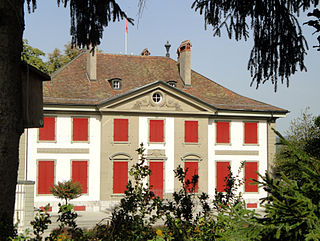
The Lohn Estate is a manor and estate located in Kehrsatz, canton of Bern, Switzerland. It serves as the official estate of the Swiss Federal Council. From 1942 to 1994, the Lohn Estate accommodated the official guests of the Swiss Confederation, which have included a number of heads of States and royalty. It is a Swiss heritage site of national significance.

The Golden Charter of Bern is a medieval charter purporting to have been issued by Holy Roman Emperor Frederick II. It establishes the town privileges of Bern, making it an Imperial Free City and, effectively, an independent state. The charter is dated to 1218, but is now believed by most scholars to be a Bernese forgery from the middle of the 13th century.
The Berne Trial was a famous court case in Berne, Switzerland which took place between 1933 and 1935. Two organisations, the Swiss Federation of Jewish Communities and the Bernese Jewish Community sued the far-right Swiss National Front for distributing anti-Jewish propaganda. The trial focussed on the Front's use of the fraudulent anti-semitic text, The Protocols of the Elders of Zion. Ultimately decided in favour of the plaintiffs, the Front was ordered to pay a symbolic fine and court costs. However, the trial became significant for the both international coverage and the extensive evidence presented, demonstrating the falsehoods contained in The Protocols.

Niklaus Manuel Deutsch, of Bern, was a Swiss artist, writer, mercenary and Reformed politician.

The Gerechtigkeitsbrunnen is a 16th-century fountain in the Gerechtigkeitsgasse in the Old City of Bern, Switzerland. It is the only Bernese fountain to retain all original design elements, and is listed as a cultural heritage of national significance.
Franz Bucher is a Swiss artist. He has produced paintings, drawings, woodcuts, etchings, sculptural objects, reliefs, murals, and stained glass.
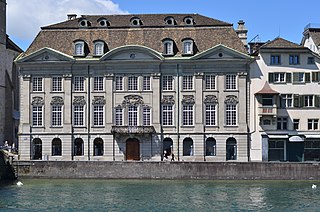
The Zunfthaus zur Meisen is the guild house of the Zunft zur Meisen. It is one of the many historically valuable buildings in the Lindenhof quarter in Zürich, Switzerland, and also housed the porcelain and faience collection of the Swiss National Museum by April 2018. It is situated at the Münsterhof and the Münsterbrücke, a bridge over the river Limmat, opposite the upper Limmatquai with the Constaffel, Zimmerleuten, Kämbel and Saffran guild houses.

Johann Rudolf Huber was an eminent Swiss portrait artist. Among his famous subjects were Charles III William, Margrave of Baden-Durlach, Joseph I, Holy Roman Emperor and Albrecht von Haller.
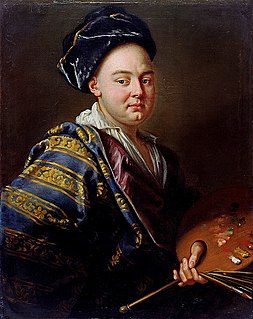
Jakob Emanuel Handmann was a Swiss painter specialised in portrait painting. He was a contemporary of the Swiss painters Anton Graff, Jean Preudhomme, Angelica Kauffman, Johann Jakob Schalch, Johann Caspar Füssli and his son Johann Heinrich Füssli.
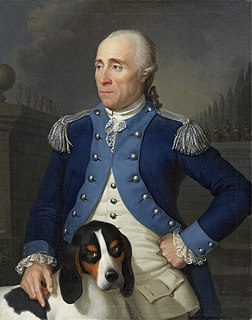
Franz Rudolf Frisching (1733–1807) was a Bernese patrician, officer, politician and industrialist.

The Béatrice-von-Wattenwyl-Haus is a town mansion on the Junkerngasse No. 59 in the Old City of Bern, only a few steps away from the Erlacherhof.
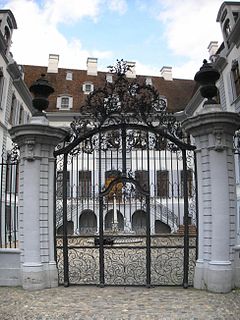
The Blue and The White House are two town mansions in the city of Basel.

Le Palais du Peyrou is a mansion in the city of Neuchâtel.
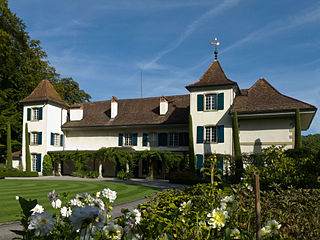
Bremgarten Castle is a castle in the municipality of Bremgarten of the canton of Bern in Switzerland. It is a Swiss heritage site of national significance.
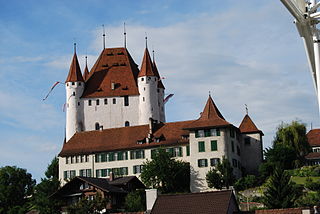
Thun Castle is a castle in the city of Thun, in the Swiss canton of Bern. It was built in the 12th century, today houses the Thun Castle museum, and is a Swiss heritage site of national significance.
The following is a timeline of the history of the municipality of Bern, Switzerland.
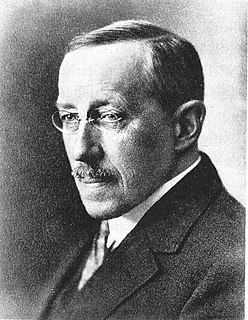
Otto Friedrich Rudolf von Tavel was a Swiss journalist and writer. Many of his novels were written in Bernese rather than Standard German, and he is one of the best-known authors in that language.















